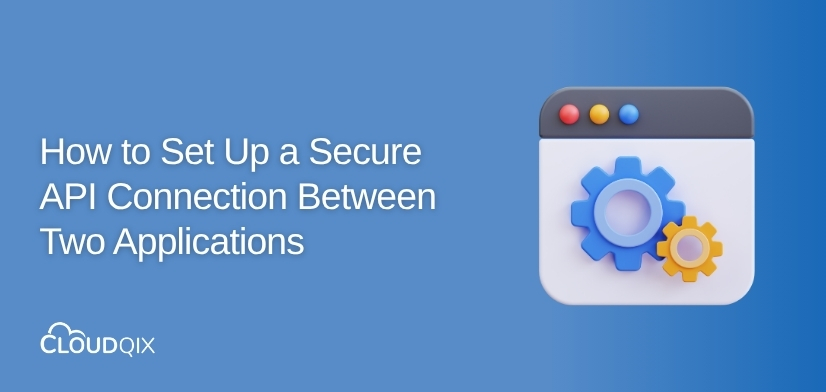When two applications need to exchange data, an API connection acts as the bridge that allows them to communicate. But not all bridges are safe. Without proper security, APIs can expose sensitive information, open backdoors for attackers, and disrupt web applications and services.
Setting up a secure API connection goes beyond simply connecting endpoints. It requires enforcing strong API security controls to protect data in transit and at rest.
Use HTTPS for a Secure API Communication Channel
Every secure API connection starts with HTTPS. Unlike standard HTTP, HTTPS encrypts all communication using SSL/TLS certificates. This means that even if someone intercepts your API requests, they won’t be able to read or modify the data being transferred.
Always make sure your APIs are only accessible via HTTPS. This not only protects data from eavesdropping and tampering but also signals that your web applications meet modern API security standards.
Many organizations simplify certificate management using modern integration tools or cloud platforms such as an integration platform as a service (iPaaS), which centralizes and automates API communication and security policies.
Implement Strong Authentication and Authorization
A secure connection makes sure only trusted systems have access to data.
Authentication
Authentication verifies who or what is making the request. Common methods include:
- OAuth 2.0: The standard for delegated authorization, allowing applications to act on behalf of a user without sharing credentials.
- API Keys: Unique identifiers for each application. Keep them strong, store them securely, and rotate them regularly.
- JSON Web Tokens (JWTs): Compact, self-contained tokens that carry authentication data securely, often used with OAuth 2.0.
Authorization
After verifying the identity, define what actions the authenticated application can perform.
- Role-Based Access Control (RBAC) assigns roles and permissions to manage resources safely.
- Fine-Grained Access Control checks attributes or claims in each request to prevent unauthorized access to sensitive information.
For larger systems, professional system integration services can help design and manage secure authentication and authorization strategies at scale.
Protect APIs with Input Validation and Secure Error Handling
Every incoming request can carry risk. Proper input validation is crucial to prevent injection attacks such as SQL injection or cross-site scripting (XSS). Sanitize and validate all data before it reaches your backend systems.
When errors occur, handle them carefully. Avoid revealing implementation details or database structures in error messages. Return clean, minimal responses with appropriate HTTP status codes. This helps protect API security and prevent data exposure.
Prevent Abuse with API Rate Limiting
Even legitimate clients can unintentionally flood your system with requests. Rate limiting protects your APIs by capping the number of API requests allowed per time period.
It’s a core API security best practice that prevents denial-of-service (DoS) attacks, improves performance, and ensures fair usage. Configure your rate limits based on client roles, API usage patterns, and service tiers.
Centralize Security and Access with an API Gateway
An API gateway gives you centralized control over traffic, authentication, and policies. Instead of configuring each connection separately, you manage all access in one place. For organizations building multiple API connections, using a cloud integration platform or iPaaS is a smart move. These platforms provide built-in gateways, logging, and encryption, helping teams automate and secure web applications more efficiently.
Enhance API Security with Monitoring and Logging
A secure setup is only as strong as your ability to see what’s happening. Enable detailed logging and monitoring for all API traffic. Track who accessed what, when, and from where.
Set up alerts for suspicious patterns, like failed authentication attempts or unusually high request rates, and audit regularly to detect potential breaches early.
Best Practices for Secure API Key and Token Management
API keys and tokens are like digital passports. Store them in encrypted vaults or environment variables, never directly in your codebase. Rotate keys periodically and immediately revoke those that are compromised or unused.
If you use an iPaaS or integration management system, take advantage of built-in secret storage and key rotation features to simplify compliance and improve API security posture.
A secure API connection is the foundation of modern automation and system reliability. It protects your data, prevents attacks, and ensures compliance across platforms.
Secure Your API Connections with CloudQix
CloudQix simplifies this process. As an enterprise-ready business integration platform, CloudQix provides built-in encryption, secure authentication, and centralized access controls, all with a no-code interface.
Whether you’re connecting internal systems or third-party apps, CloudQix helps you automate safely, follow API security best practices, and maintain continuous visibility over your data flows.
Explore how CloudQix’s workflow automation solutions and enterprise automation tools can streamline your integration strategy. Talk to an Expert!


